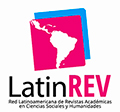Game-Narrative Adaptation of Halliday’s Easter Egg Hunt into the movie Ready Player One
DOI:
https://doi.org/10.11606/issn.2317-9511.v38p217-233Keywords:
Adaptation, Cinema, Ready Player One, Cline, Easter Egg Hunt, Video gameAbstract
The fictional videogame Halliday’s Easter Egg Hunt, described on the novel Ready Player One (Cline, 2011), is an ode to the geek universe of the 1980s, seeing that it presents, on the format of Easter Eggs, cultural elements (especially films and games) common in the mentioned decade. On the year of 2018, the Warner Brothers Studios premiered the cinematographic adaptation of that novel, questioning Cline’s position in relation to the inadaptability of his story. This essay analyzes the solutions founded by its adaptors, considered as co-creators in this approach (Hutcheon, 2013), when adapting the game-narrative (Aarseth, 1997; 2005) presented in the book to the cinematographic aesthetic. The analysis showed that the film aesthetic (Edgar-Hunt, Marland and RAWLE, 2010; Bordwell and Thompson, 2013) and the game structural construction guided the transformation from the book into the cinema.
Downloads
References
AARSETH, E. Doors and Perception: Fiction vs. Simulation in Games. In: Intermédialités: Histoire et théorie des arts, des lettres et des techniques. n. 9, 2007, p. 35-44.
AARSETH, E. Ergodic Literature. In: AARSETH, E. Cybertext: Perspectives on Ergodic Literature. Sample chapter. Baltimore: The Johns Hopkins University Press, 1997. p. 1-15.
AARSETH, E. From Hunt the Wumpus to EverQuest: Introduction to Quest Theory. In: Proceedings, Entertainment Computing - ICEC 2005: 4th International Conference, Sanda, Japan, September 19-21, 2005. Lecture Notes in Computer Science, Springer 2005, p. 1-11.
BORDWELL, D.; THOMPSON; K. A arte do cinema: uma introdução. Trad. Roberta Gregoli. São Paulo: EDIUSP, 2013.
CLINE, E. Jogador Número Um. Trad. Carolina Caires Coelho. São Paulo: LeYa, 2012.
CLINE, E. Ready Player One. New York: Broadway Books, 2011.
DINIZ, T. Tradução Intersemiótica: do texto para a tela. Cadernos de Tradução, n. 3, Florianópolis, 1998, p. 313-338.
EDGAR-HUNT, R.; MARLAND, J.; RAWLE, S. Basic Film-making: the language of film. London: AVA, 2010.
HATTNHER, Á. Quem mexeu no meu texto: observações sobre literatura e sua adaptação para outros suportes textuais. Revista Brasileira de Literatura Comparada, São Paulo, n.16, p. 145-155, 2010.
HATTNHER, Á. Literatura, Cinema e Outras Arquiteturas Textuais: algumas observações sobre Teorias da Adaptação. Itinerários Araraquara, n.36, p. 35-44, jan./jun. 2013.
HUTCHEON, L. A Theory of Adaptation. 2ª Ed. New York: Routledge, 2013.
HUTCHEON, L. Uma teoria da adaptação. Trad. André Cechinel. 2ª Ed. Florianópolis: Editora da UFSC, 2013.
JENKINS, H. A cultura da convergência. 2ª ed. Trad. Susana Alexandria. São Paulo: Aleph, 2009.
MCKEE, R. Story: substância, estrutura, estilo e os princípios da escrita de roteiro. trad. Chico Marés. Curitiba: Ares & Letras, 2006.
MCKEE, R. Story: substance, structure, style and the principles of screenwriting. New York: ReganBooks, 1997.
READY PLAYER ONE. Direção: Steven Spielberg. Produção: Steven Spielberg. Roteiro: Zak Penn e Ernest Cline. Los Angeles: Warner Brothers, c2018. 1 DVD (140 min), widescreen, color. Produzido por Warner Video Home. Baseado na novela “Ready Player One” de Ernest Cline.
ROUSE, R. Game Design: Theory and Practice. 2. ed. Texas: Wordware Game Developer’s Library, 2005.
SANTAELLA, L. Da cultura das mídias à cibercultura: o advento do pós-humano. Revista Famecos. Porto Alegre, n. 22, dez 2003, p. 23-32.
SKOLNICK, E. Video Game Storytelling: What Every Developer Needs to Know about Narrative Techniques. Nova York: Watson-Guptill Publications, 2014.
Downloads
Published
Issue
Section
License
Copyright (c) 2021 Fernanda Martins Ferreira de Araujo, Líliam Cristina Marins

This work is licensed under a Creative Commons Attribution-NonCommercial-ShareAlike 4.0 International License.
Autores que publicam nesta revista concordam com os seguintes termos:
- Autores mantém os direitos autorais e concedem à revista o direito de primeira publicação, com o trabalho simultaneamente licenciado sob a Licença Creative Commons Attribution BY-NC-SA que permite o compartilhamento do trabalho com reconhecimento da autoria e publicação inicial nesta revista.
- Autores têm autorização para assumir contratos adicionais separadamente, para distribuição não-exclusiva da versão do trabalho publicada nesta revista (ex.: publicar em repositório institucional ou como capítulo de livro), com reconhecimento de autoria e publicação inicial nesta revista.
- Autores têm permissão e são estimulados a publicar e distribuir seu trabalho online (ex.: em repositórios institucionais ou na sua página pessoal) a qualquer ponto antes ou durante o processo editorial, já que isso pode gerar alterações produtivas, bem como aumentar o impacto e a citação do trabalho publicado (Veja O Efeito do Acesso Livre).







